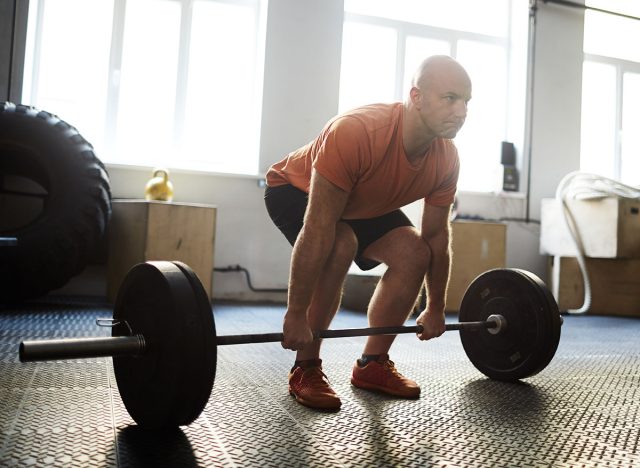Staying active after 50 is one of the best ways to maintain mobility, strength, and independence. But as we age, our joints need a little extra care. Cartilage thins, synovial fluid decreases, and ligaments lose elasticity. These changes don’t mean you should stop exercising—they mean you need to be smarter about how you move.
Below are six common exercise mistakes that can damage joint health after 50, along with better ways to move. These changes can keep your workouts safe, your joints healthy, and your body feeling strong.
High-Impact Cardio
Why It’s Harmful
Running, jumping rope, and intense aerobics put repetitive stress on joints like the knees, hips, and ankles. Over time, this strain can wear down cartilage and cause discomfort or long-term damage.
What to Do Instead
Opt for low-impact cardio that protects your joints while still raising your heart rate. Walking, cycling, swimming, and elliptical training are excellent choices. They’re effective for heart health and endurance without punishing your joints.
Pro Tip: If you enjoy running, alternate it with lower-impact workouts to give your body time to recover and reduce wear.
Skipping Warm-Ups
Why It’s Harmful
Jumping into a workout cold can lead to strained muscles and added pressure on your joints. As we age, our muscles and connective tissues are less elastic, increasing the risk of injury without a proper warm-up.
What to Do Instead
Dedicate 5 to 10 minutes to dynamic warm-ups. Gentle movements like arm circles, leg swings, and light jogging prepare your body for exercise. This increases blood flow, activates muscles, and reduces the chance of joint stress.
Pro Tip: In colder months, spend a few extra minutes warming up to ensure your joints are fully ready for action.
Poor Exercise Form
Why It’s Harmful
Bad form puts uneven pressure on joints. Common mistakes like rounding your back during deadlifts or letting knees cave inward during squats can result in joint pain or injury over time.
What to Do Instead
Focus on form over speed or weight. Start with bodyweight exercises to learn proper alignment. Use a mirror or ask a trainer to assess your movement. Good posture and joint alignment will help you move more efficiently and safely.
Pro Tip: Don’t progress to heavier weights until you’re confident your form is correct on every rep.
Lifting Too Heavy
Why It’s Harmful
Using weights that are too heavy increases the risk of injury and puts pressure on shoulders, knees, and wrists. Poor control during heavy lifts can overload joints instead of strengthening muscles.
What to Do Instead
Choose moderate weights that allow you to perform 12 to 15 controlled reps. You’ll still build strength while protecting your joints. Isometric exercises and resistance bands can also challenge your muscles without adding joint strain.
Pro Tip: If your range of motion is limited or you feel unstable, the weight is likely too heavy. Scale back to focus on quality.
Ignoring Pain
Why It’s Harmful
Pain is a sign something is off. Working through sharp or chronic joint pain can worsen inflammation, lead to injury, or accelerate joint degeneration.
What to Do Instead
Learn to differentiate between muscle soreness and joint pain. If something feels sharp or lingers beyond your workout, adjust or skip the exercise. For example, if lunges bother your knees, try step-ups or chair squats instead.
Pro Tip: Keep a workout journal to track pain patterns. This can help you identify which movements need to be modified or removed.
Neglecting Recovery
Why It’s Harmful
Without proper recovery, your joints never get a chance to heal. Overtraining can lead to stiffness, fatigue, and chronic joint irritation. Recovery is just as important as the workout itself.
What to Do Instead
Schedule regular rest days and include active recovery in your routine. Foam rolling, mobility drills, and gentle stretching can enhance joint flexibility. Nutrition also plays a role—eat anti-inflammatory foods like salmon, leafy greens, berries, and walnuts to support joint health.
Pro Tip: Prioritize sleep. Aim for 7 to 9 hours nightly to allow your body the downtime it needs for tissue repair.
Empower Your Movement With Smarter Choices
After 50, fitness is less about pushing limits and more about moving with intention. That doesn’t mean avoiding hard work—it means protecting the parts of your body that do the work. Your joints are key to everything from walking to lifting to dancing, so treat them with respect.
With just a few adjustments to your exercise habits, you can move more comfortably and reduce your risk of injury. Avoiding harmful patterns and embracing joint-friendly alternatives gives you the freedom to stay strong, active, and pain-free for years to come.










